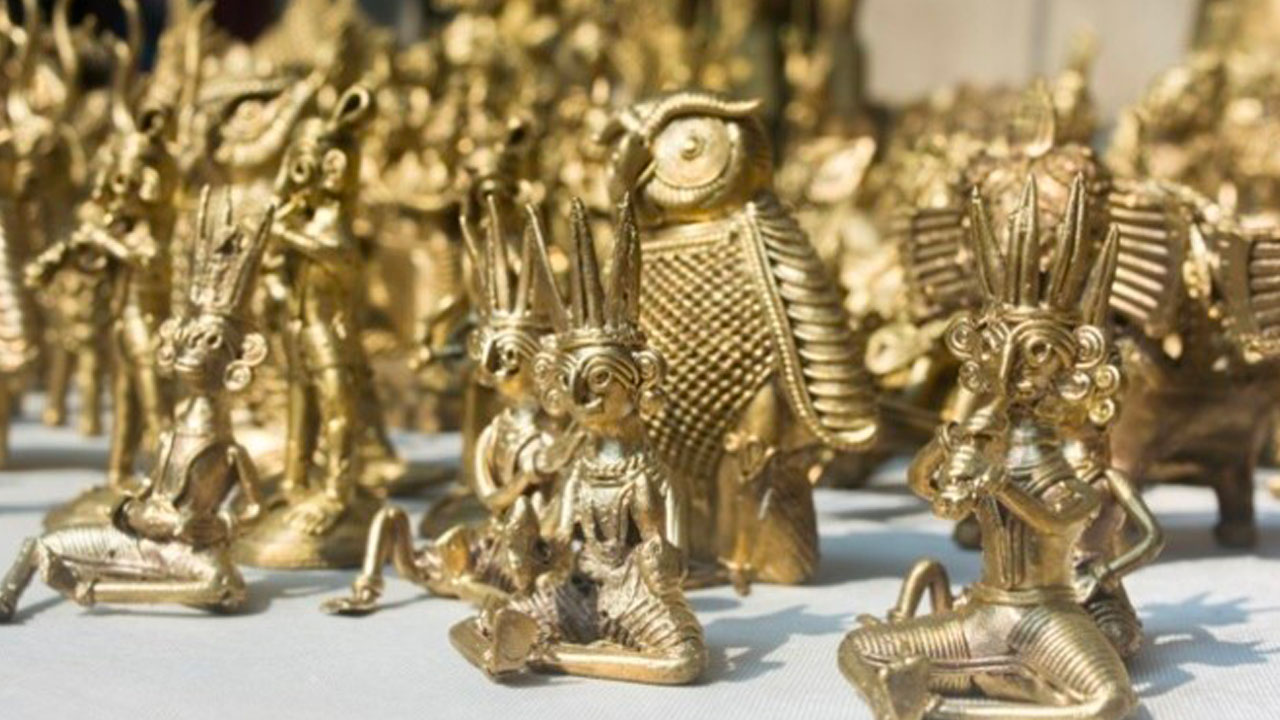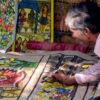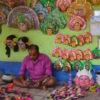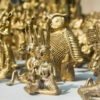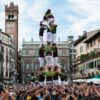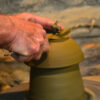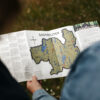© copyright of the cover image “Dokra products of varied designs (2020)” belongs to Ananya Bhattacharya.
Use without the author’s permission is forbidden.
Summary
Dokra is an age-old craft of lost-wax metal casting used to handcraft figurines, deities, decorative pieces, jewelry, and pots, practiced by specific ethnic communities in the village of Bikna in West Bengal, India. The hamlet consisting of 60 Dokra artist households who settled here in the 1960s is now an active cultural destination for buyers, tourists, and students which can partly be attributed to the acquisition of a Geographical Indication (GI) tag in 2018.
This work was made possible due to the Rural Craft Hub initiative (2013-2016) of the Department of Micro Small and Medium Enterprise and Textiles (MSME&T), Government of West Bengal in collaboration with UNESCO. It was based on the ‘Art for Life’ model of Contact Base, a UNESCO-accredited NGO in India.
The point of departure
The village of Bikna, despite being located close to the district headquarters Bankura and Shanti Niketan, a popular cultural tourist destination, suffered from a host of problems back in 2013. Apart from poverty and illiteracy, the community suffered from various health problems owing to a poor environment and hazardous air quality because of the thick smoke being emitted by old furnaces used to fire Dokra products. Owing to a select few artists who controlled the business and commissioned work to other artisans on a wage basis, there was a lack of opportunities for the youth. Moreover, the existence of the specialized skills of Dokra artists was relatively unknown to people in the neighboring villages – there was very little awareness of such a cohesive cluster of traditional metal artists in Bikna.
What worked?
The ‘Art for Life’ intervention which strove to enhance the livelihood of craft practitioners was launched in Bikna in 2013. It attempted to address gaps in the production, community organization, and entrepreneurship areas; offer technological support through fuel-efficient, minimum-pollution furnaces; advance capacity-building in business efficiency and marketing, and promote authentic Dokra while upgrading the village space. It also aimed to nurture an appreciation for and awareness of the artists and their specialized skills – this created a collective identity and fostered a sense of dignity among the artists. Organizing the artists and strengthening the collective created a higher demand for their craft and opened them up to diverse market opportunities – the village soon became a vibrant hub of Dokra artists visited regularly by local, regional, domestic, and international visitors.
Additionally, there is a folk-art center in Bikna – consisting of a work shed, boarding and lodging facilities for visitors, and a community museum bearing testimony to their artistic heritage and story of change – which is owned and managed by the community. Bikna has been included in the regional tourism circuit by the local tourism department as a cultural tourism destination which has resulted in a regular in-flow of tourists.
Its annual village festival of Dokra craft, organized by Bankura Bikna Hastajata Dokra Kutir Shilpa Kalyan Samity, a community collective run by Bikna’s Dokra artists, attracts tourists and collaborators throughout the year. During the festival, the village itself becomes a living museum as it reverberates with the energy and creativity of the local artists and visitors who participate in workshops run by folk artists at the museum. Today, there are a total of 163 self-employed artists practicing the Dokra craft as a primary livelihood. Apart from the village festival which enjoys an average footfall of 1500 visitors per day, the hub gets visitors throughout the year, with an annual footfall of over 5000 tourists.
Benefits
The skill base in the village has grown and economic development has led to social inclusion, and an improvement of overall well-being as well as living standards. Change is not limited to a growing income of the artists, but is also evident in their lifestyle, a positive attitude towards their community members, and the use of shared resources. Shanties have been repaired, water scarcity has reduced, and sanitation and drainage facilities have improved. Bikna is also listed in the tourism itinerary of the area, making it an attractive stop for tourists.
The numbers
The annual income from tourism is about INR 2 million (US$ 27,100). The average monthly income of the Dokra artists has gone up to INR 11500/- (US$ 150) per month while the average annual sale from the hub is around INR 25 million (US$ 300000).
Challenges in developing sustainable ICH Tourism
Lack of literacy, marginalization, and low standard of living characterized by alcoholism and other related social maladies had to be addressed with a contextualized focus, keeping in mind the needs, specificities, and orientation of the local community.
Lessons learned
Such a community-led tourism enterprise has been developed through a multi-pronged approach composed of capacity-building measures, market preparedness for modern and ever-changing consumer trends, and revival and revitalization of the traditional art form itself.

